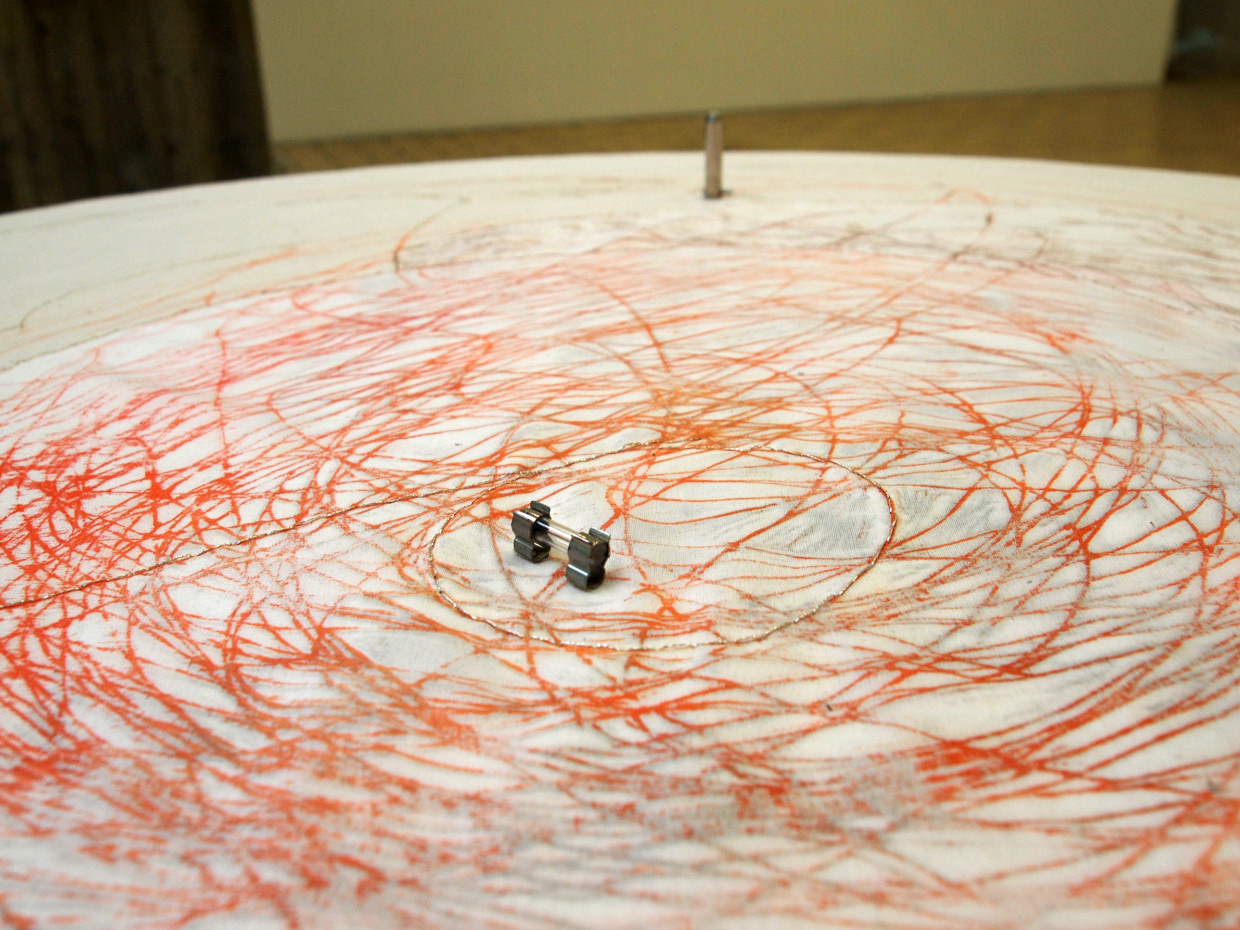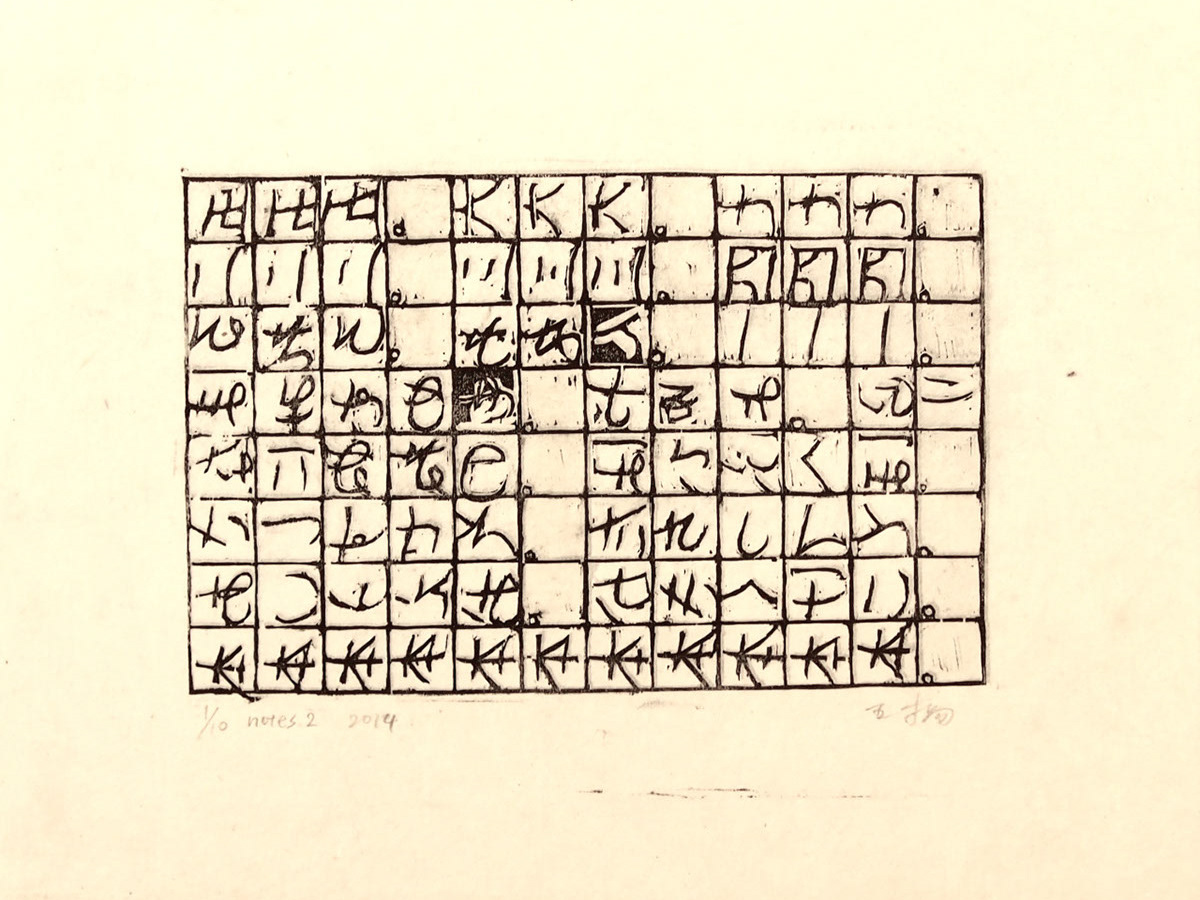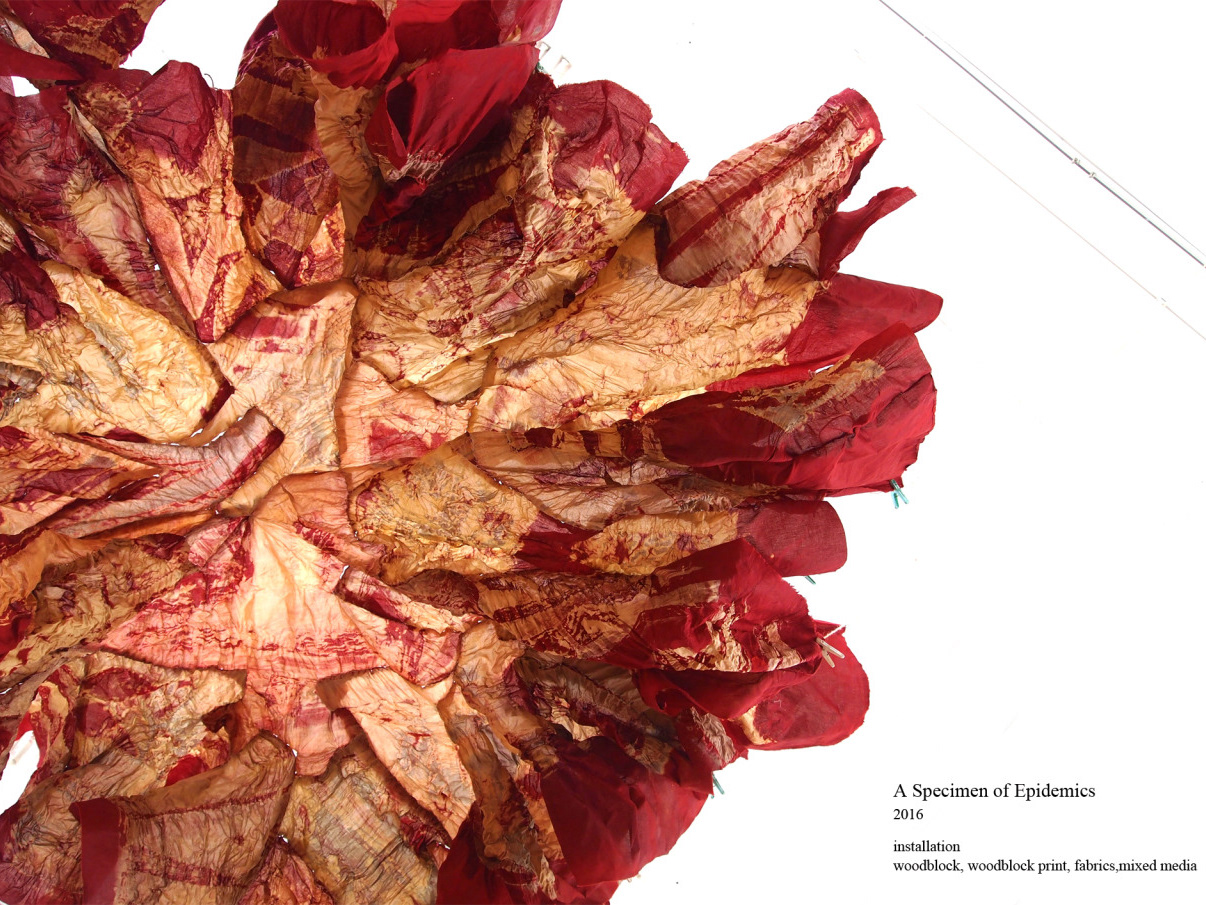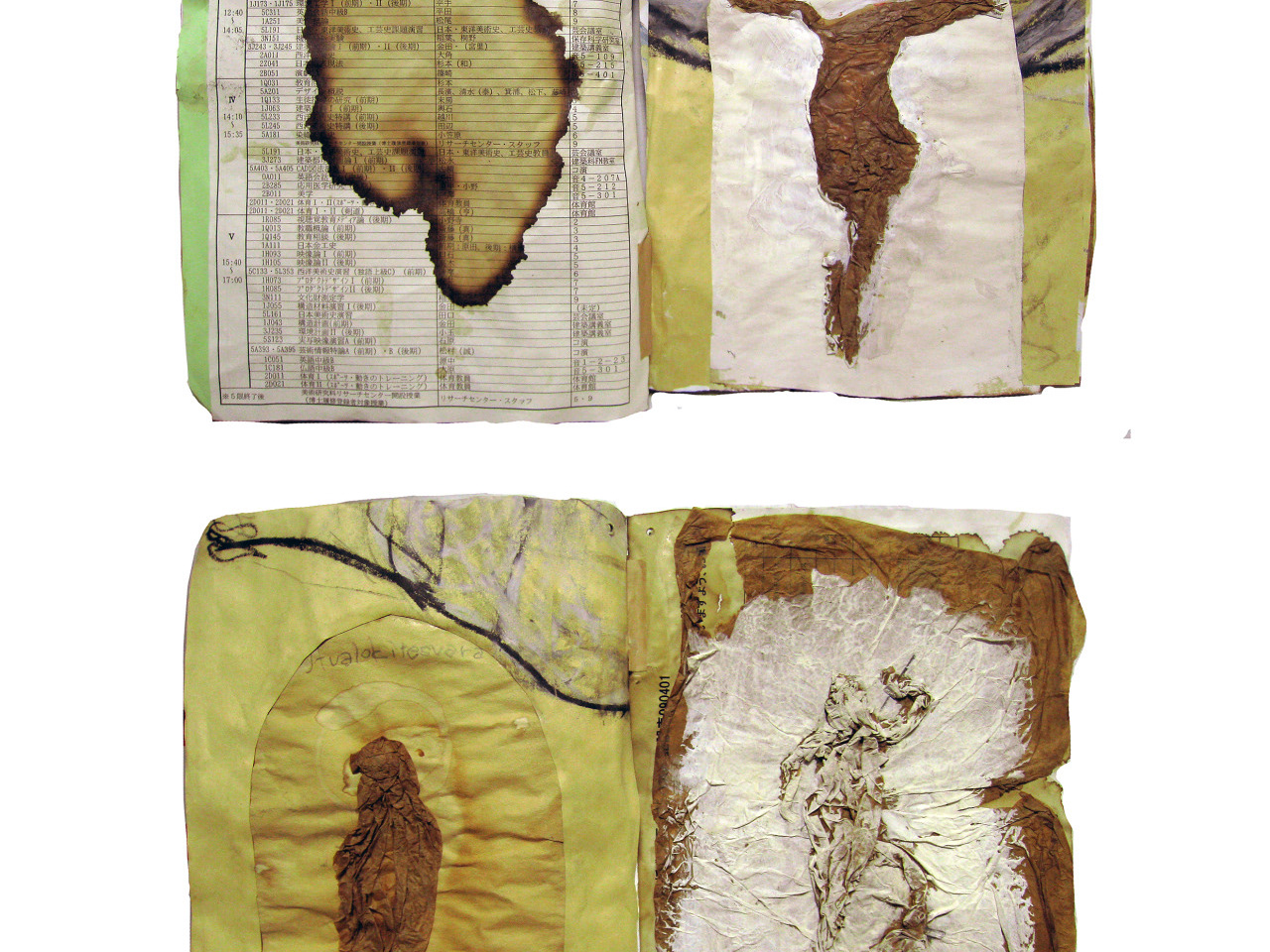
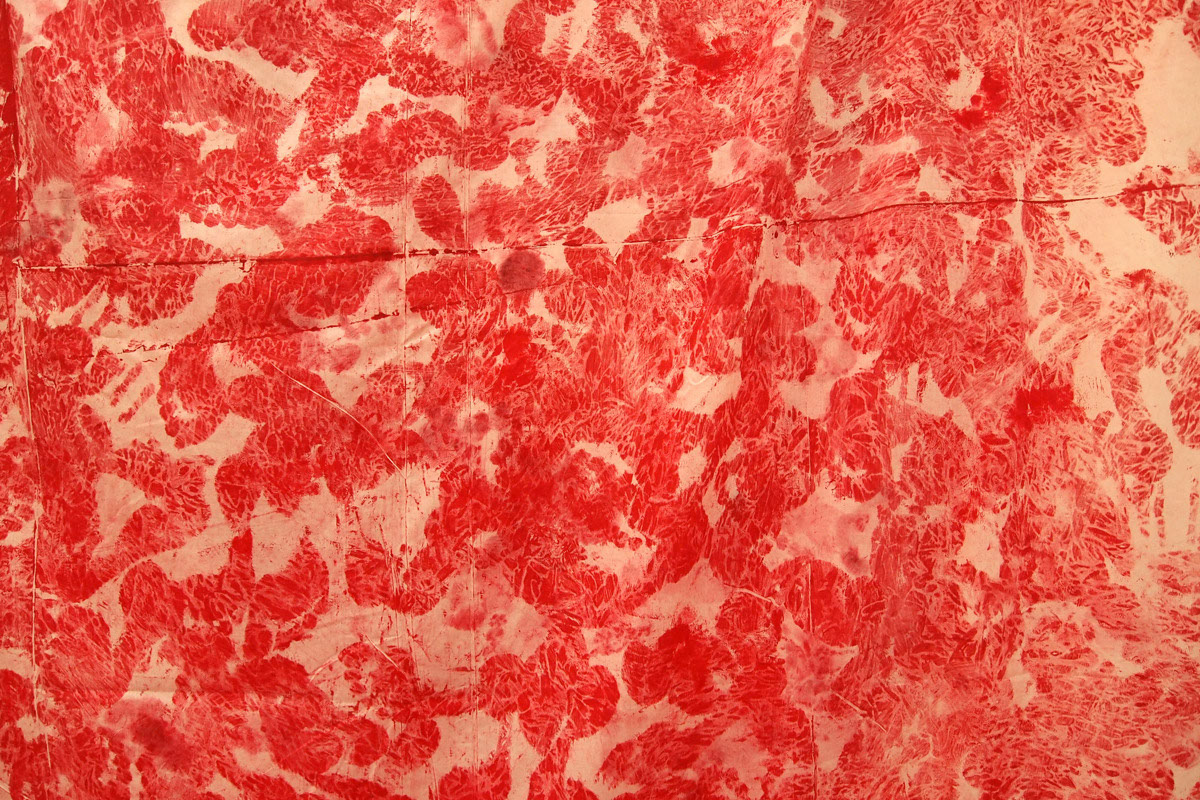
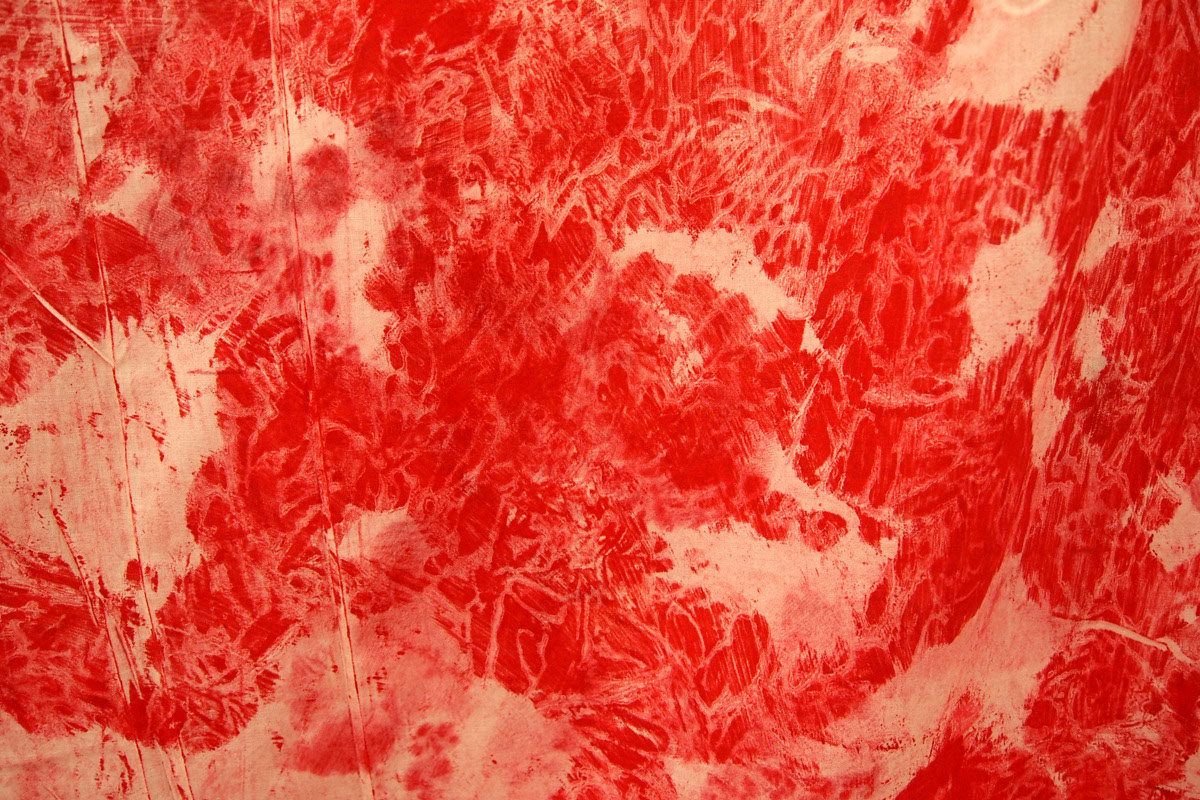

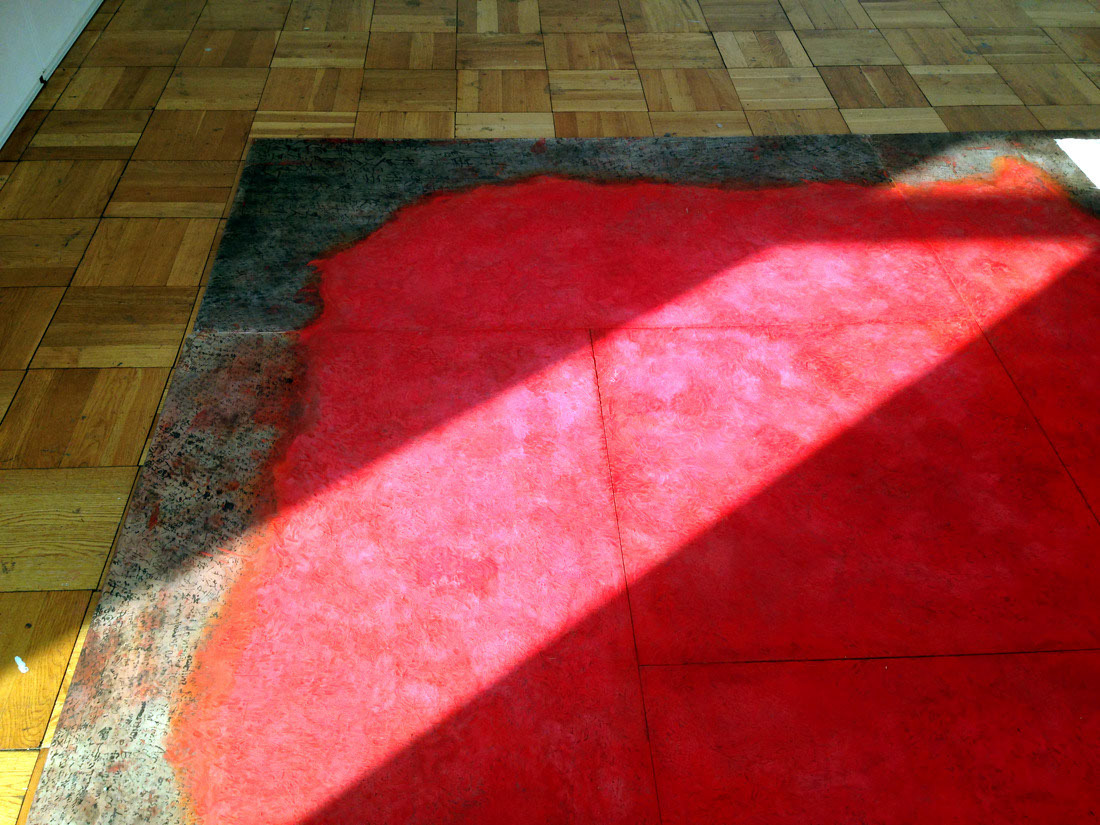

This is my graduation work. People can walk on the woodblock just like the ground. I also walked on this woodblock to make a print.
The red image contained the shape of my carving together with the shape of my feet.
The words written on the woodblock have no meaning. I picked them up at random from books and documents, newspapers around me (in three languages: Japanese, Chinese, and English.) Other people felt it looks likes a transcribed sutra or something else, but the red area―the carved spaces―are free from boundaries. They just exist in abstraction, like a piece of flesh.
I think the act of recognizing a language is like the act of sorting out a raindrop. In nature it’s a very difficult task, but people don’t think that way because language is in their body.
Japan used to have one custom called Fumie. That small bronze or brass plates with images of Christ was used to find secret Christians. The government got the suspicious people together, and let them put their feet upon it. The government considered the people who couldn’t step on the plate were Christian and therefore executed them.
This is one expression of thought control.
Of course, there are few existing institutions such as this in the world now.
But we still do it unconsciously and voluntarily even in a democratic nation. Why might this be? This may be because there is a personal context and a group context, and both are rarely be blended. This variance would exist forever as long as we are living in a community that demands a common language, common thought, and a common culture. Sometimes a test is necessary to see whether we have a common context or not.

